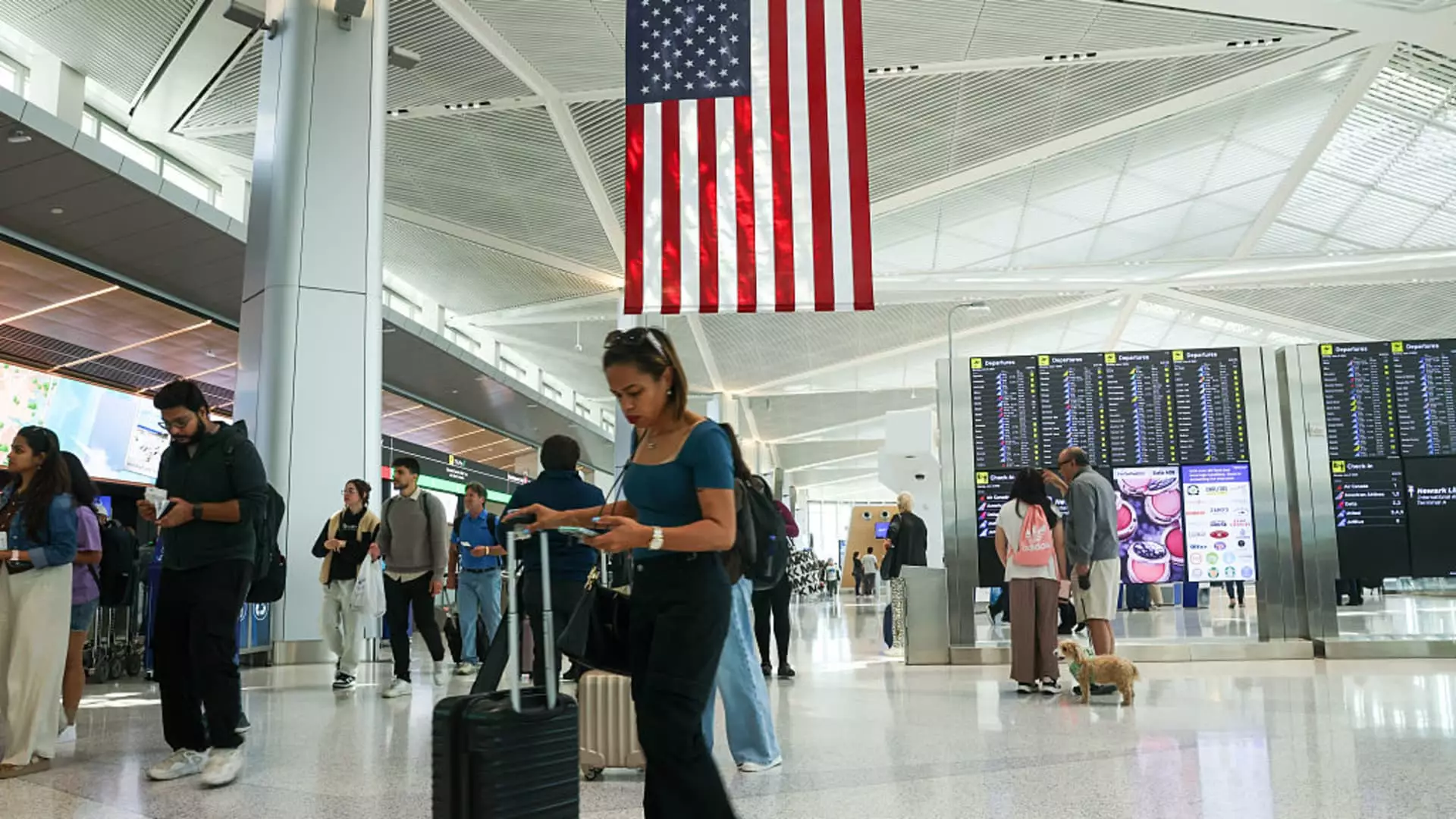Despite the bustling forecasts for the July 4 holiday and a seemingly packed travel schedule, the airline industry remains engulfed in a cloud of cautious pessimism. While millions are expected to take to the skies, the reality behind these numbers suggests a fragile recovery that is more a reflection of strategic bargains than actual demand-driven growth. The perception of a booming summer is largely fueled by what the airlines now call “summer on sale,” a polite euphemism for desperate price slashes to lure passengers amid waning enthusiasm. Airlines are flooding the market with discounts, a clear sign that they are struggling to fill seats, especially on routes that once reliably turned profits.
The average domestic round-trip airfare edging down to $265—a mere 3% drop from last year—indicates a pattern of price warfare rather than robust consumer confidence. This decline, the lowest since 2021, highlights a fundamental problem: the demand for air travel simply isn’t matching the capacity. If demand were healthy, ticket prices would be stabilizing or rising. Instead, airlines are slashing fares, undercutting each other to maintain a semblance of normalcy but risking a long-term erosion of revenue streams.
Uncertainty Clouds the Industry’s Horizon
Despite the short-term optimism, airline executives are cautiously retreating from their full-year forecasts, citing an unpredictable economic climate as the primary culprit. Recent pullbacks, such as Southwest, Delta, American, and Alaska Airlines withdrawing their 2025 forecasts, reveal a collective recognition of the turbulence ahead. Factors such as fluctuating tariffs under the legacy of political instability, a decline in international visitors, and global economic unpredictability have created a perfect storm that stifles growth prospects.
The persistent uncertainty is reflected in airlines’ operational adjustments—many plan to prune unprofitable routes and cut back on flights during off-peak periods. Their focus has shifted from aggressive capacity expansion to protecting their bottom line, primarily by targeting the lucrative second and third quarters of the year. Yet, even with this strategic pivot, the demand remains tepid.
The Disconnect Between Passenger Numbers and Economic Indicators
Recent TSA data confirms a consistent flow of travelers, with the agency projecting over 18.5 million screened through U.S. airports from last week to next. Nevertheless, this surge fails to mask the industry’s underlying struggles. No single day during this period surpassed the 3.1 million travelers recorded on June 22, indicating that mass travel is not as widespread as it appears. While the economy’s resilience—evidenced by stronger-than-expected jobs growth—has prevented a full-blown recession, demand for air travel is not reflecting this economic robustness.
Moreover, consumer spending data paints an even grimmer picture. Bank of America’s reports of an 11.8% decline in airline-related spending in June, compared to the previous year, exemplify how consumers are pulling back. This is a clear sign that travelers remain hesitant, wary of future economic shocks, or are simply prioritizing cost-saving measures in their personal budgets. Airlines’ hopes for a quick rebound are likely misplaced; a pattern of declining passenger expenditure signals a protracted period of subdued demand.
International Travel: A Silver Lining or a Mirage?
While international flights are technically up, the fare landscape paints a different story. U.S. outbound international travel has increased modestly—4.3% from last summer—but fares are falling sharply. For journeys to Europe, prices are now on par with pre-pandemic levels, averaging $817, and Asian destinations are seeing a 13% decline, with fares around $1,328.
This drop in international fares, though seemingly positive on the surface, underscores an excess capacity problem abroad as well. Airlines are leveraging lower prices to fill planes that otherwise might sit empty, and this casual discounting risks long-term profitability. Chasing market share through pricing alone is not a sustainable strategy; it merely prolongs the ongoing chaos rather than fixing it.
The Stark Reality: A Market at Crossroads
The industry’s current trajectory highlights a harsh reality: the existing overcapacity combined with tepid demand is unsustainable. Airlines that once thrived on high volume and premium pricing are now caught in a squeeze. They are caught between the need to attract travelers with lower fares and the imperative to maintain financial health.
In this climate, cost-cutting measures and strategic route reductions are necessary but insufficient. The root issue remains a broader economic hesitancy from consumers, influenced by geopolitical uncertainties, inflationary pressures, and a general sense of instability. Until these factors stabilize, the airline industry’s optimism might be more wishful thinking than a true recovery.
While the industry’s push to maintain momentum is understandable, it is also a risky gamble. Relying on short-term discounts and hoping for an eventual rebound could erode profitability permanently. The challenge lies in balancing capacity with demand, a dance that airlines are struggling to master amid a shifting economic landscape.

